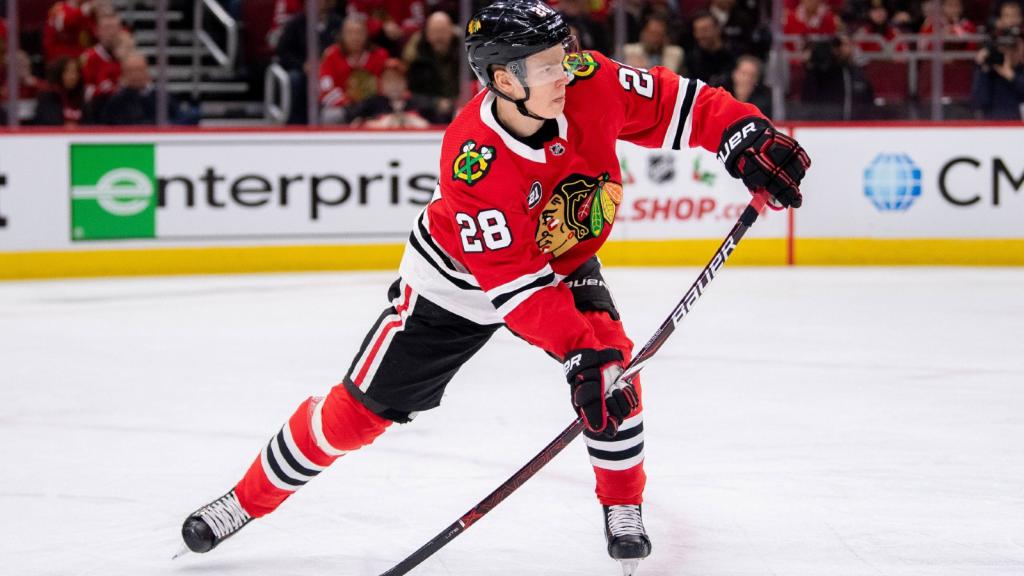VIDEO ROOM: Robert Thomas combines skill and tenacity

Robert Thomas is a player I’m very familiar with, having watched him with the London Knights and Hamilton Bulldogs of the OHL as well as with Team Canada at the World Junior Championships. What we’ve seen during his first season in the NHL has shown he can translate what made his game a success at the major-junior level to the professional level.
Chief among these facets of his game are his hockey sense, his skating, and his tenacity—Thomas isn’t the kind of guy to give up on a play.
Right now Thomas is getting a solid taste of the postseason as the Blues get ready to square off with the Sharks in the Western Conference finals. For the purposes of our article, though, we’ll be focusing on the regular season. Thomas averaged somewhere around thirteen minutes per game, and the two games we’ll examine in this article are at wildly different ends of that spectrum. In the first he plays only 9:28; in the second, it’s closer to 17 minutes. Coincidentally (or perhaps not), the first game is played under former St. Louis Blues head coach Mike Yeo and the second is under interim head coach Craig Berube.
First up is November 1st against the Vegas Golden Knights. Even while on the fourth line playing less than 10 minutes, Thomas showcases skills that will make him a successful part of the Blues lineup moving forward.

First up is this great one-touch pass on the first Blues goal. Robby Fabbri wins a board battle and gets the puck out to Thomas. Thomas knows exactly where Oskar Sundqvist is going to be and doesn’t hesitate before passing to him. Sundqvist scores. This all starts when Thomas comes flying off the bench and into position to receive the pass from Fabbri. He’s behind the net and ready to join the board battle if need be, but at the same time is aware of where his other linemate is and ready to immediately pass the puck to him for the eventual goal.

Here Thomas once again uses that hockey sense to track where the puck is and project where it will be. He gets himself into position behind the Blues’ net to fight for it along the boards (are you noticing a trend here?), using his hands and body to gain possession and get the puck out. It’s a small moment, but an important one. His winning this puck from Nosek eventually leads to the Blues breaking the puck out.

In the same game, we see an excellent example of Thomas’s vision and situational awareness. After chasing down a loose puck in his own end, he chips it all the way down the ice—but this isn’t one of those “clear the puck however you can” situations. He’s not trying to dump the puck. Watch his head; you can see him look at Fabbri. He knows where Fabbri is headed, and that’s where he chips the puck. It’s basically a pass in that sense. While Fleury saves Fabbri’s shot, it’s still a really smart play.
Another moment not long after this didn’t make the gif list, but shows off Thomas’s hockey sense and how it works together with skills like body positioning. He uses his stick to force a turnover and then cuts to his right, angling his body in such a way that he opens a lane for Sundqvist, who eventually scores.

Moving on to our second game, March 30th against the New Jersey Devils, we find Thomas on a line with Pat Maroon and Tyler Bozak and clocking 16:40 of ice time—quite a change in circumstances from November. Before the specific sequence gif’d below Thomas is already very involved in the play, using his awareness to get into shooting lanes or create space for himself or teammates.
Here he’s being shadowed by Devils defenseman Connor Carrick even before he receives a pass from Maroon. When he gets the puck, Carrick chases him through the Devils’ zone and back behind the net. Thanks to his positioning and skating ability, Thomas manages to get free and swoop around in front of the net, and because there’s traffic he goes to his backhand and sends the puck straight in.
His decision-making throughout is solid, and the way he is able to change directions behind the net and evade Carrick is the product of excellent edgework.
